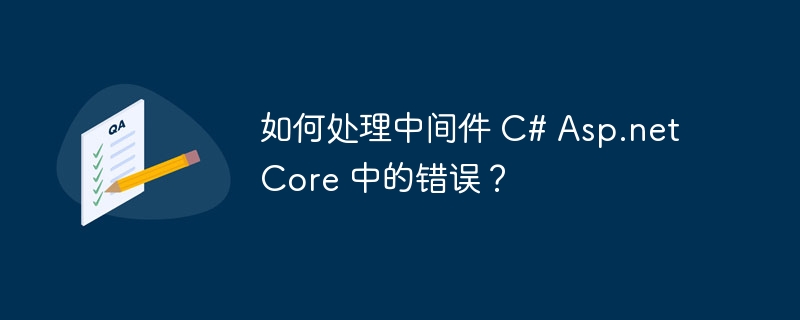

새 폴더와 CustomExceptionMiddleware라는 클래스를 만듭니다. ExceptionMiddleware.cs가 내부에 있습니다.
가장 먼저 해야 할 일은 IloggerManager 서비스를 등록하고 종속성 주입을 통해 RequestDelegate를 구현합니다.
RequestDeleagate 유형의 _next 매개변수는 처리할 수 있는 함수 대리자입니다. 우리의 HTTP 요청.
등록 프로세스 후에 InvokeAsync() 메서드를 생성해야 합니다. RequestDelegate는 이것이 없으면 요청을 처리할 수 없습니다.
_next 대리자는 컨트롤러의 요청과 Get 작업을 처리해야 합니다. 성공적인 응답을 생성해야 합니다. 그러나 요청이 실패하면(실패하면 예외를 강제하고 있으므로)
미들웨어는 catch 블록을 트리거하고 HandleExceptionAsync를 호출합니다. 방법.
public class ExceptionMiddleware{
private readonly RequestDelegate _next;
private readonly ILoggerManager _logger;
public ExceptionMiddleware(RequestDelegate next, ILoggerManager logger){
_logger = logger;
_next = next;
}
public async Task InvokeAsync(HttpContext httpContext){
try{
await _next(httpContext);
}
catch (Exception ex){
_logger.LogError($"Something went wrong: {ex}");
await HandleExceptionAsync(httpContext, ex);
}
}
private Task HandleExceptionAsync(HttpContext context, Exception exception){
context.Response.ContentType = "application/json";
context.Response.StatusCode = (int)HttpStatusCode.InternalServerError;
return context.Response.WriteAsync(new ErrorDetails(){
StatusCode = context.Response.StatusCode,
Message = "Internal Server Error from the custom middleware."
}.ToString());
}
}다른 정적 메서드로 ExceptionMiddlewareExtensions 클래스를 수정하세요. −
public static void ConfigureCustomExceptionMiddleware(this IApplicationBuilder
app){
app.UseMiddleware<ExceptionMiddleware>();
}Startup 클래스의 구성 메서드에서 이 메서드를 사용하세요. -
app.ConfigureCustomExceptionMiddleware();
위 내용은 미들웨어 C# Asp.net Core의 오류를 처리하는 방법은 무엇입니까?의 상세 내용입니다. 자세한 내용은 PHP 중국어 웹사이트의 기타 관련 기사를 참조하세요!